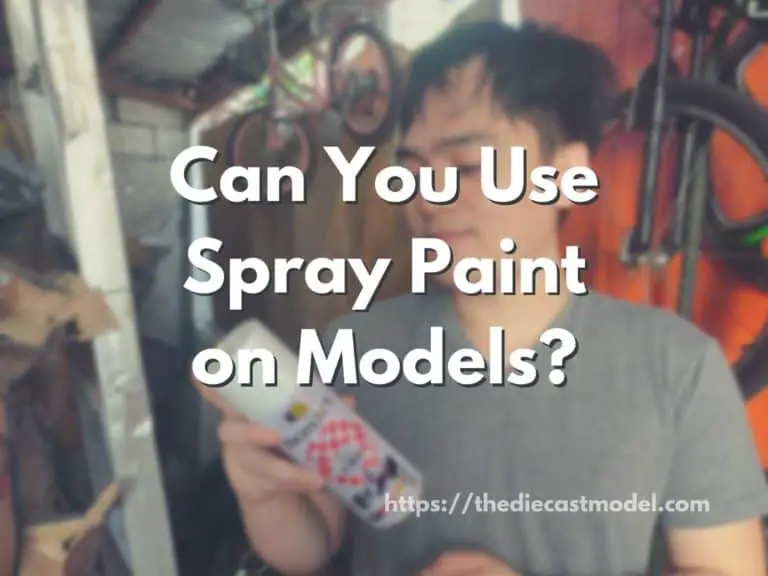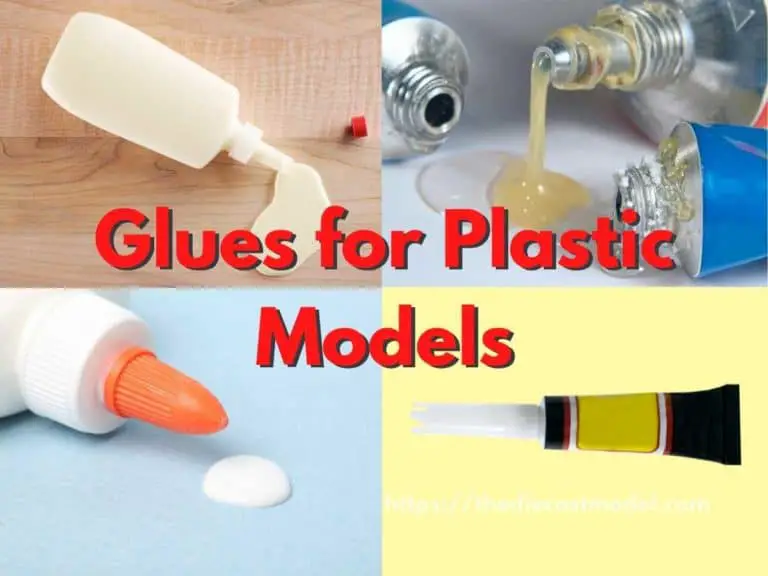Plastic Cement and Super Glue: Are they the same?
One of the bonding agents people get confused about is plastic cement and super glue. Both plastic adhesive and superglue are very strong and good at bonding objects together. However, is plastic cement the same as super glue?
Plastic cement is not the same as super glue because the composition of plastic cement is different from superglue. In general, plastic cement consists of butyl acetate and acetone, while superglue is composed of ethyl 2-cyanoacrylate, also known as ECA. Lastly, plastic cement is best used for porous objects while super glue is used for general purposes.
In this blog post, we will talk about the differences between plastic cement and super glue. We are going to talk about their use, composition, strength, and many more.

Is Plastic Cement the Same as Super Glue?
| Plastic Cement | Super Glue | |
| Composition | 40-50% Butyl Acetate, 40-50% Acetone, 0-20% Butanone | 90-100% Ethyl 2-cyanoacrylate, 0-10% polymethyl methacrylate , 0-0.5% hydroquinone |
| Bond | Welds plastic makes the bond strong | Strong bond but has weak torsional strength |
| Best Use | Plastic and Porous Materials | General Purpose |
| Removal | Harder to Remove | Easier to Remove |
*the percentage difference in the chemical composition depends on the superglue and plastic cement brand you will be using.
Plastic cement or model glue is a gel-like substance with chemical components.
The main ingredients of plastic cement are 50% Butyl Acetate, 50% Acetone, and other quick setting ingredients consisting of 40% Ethyl Acetate, 40% Acetone, and 20% Butanone.
Compared to Butyl Acetate, Ethyl Acetate evaporates more quickly and is hotter when used on plastic.
In most polystyrene cement, butanone is the primary component.
Plastic cement is strong enough to melt plastics to create an unbreakable bond.
Superglue, on the other hand, consists of 90-100% ethyl 2-cyanoacrylate or ECA. In addition, different brands of superglue contain 0-10% polymethyl methacrylate, 0-0.5% hydroquinone.
Super Glue or Cyanoacrylate is an adhesive that holds things together.
For weight-bearing purposes, the bond is strong yet weak in terms of torsional strength. Therefore, super glue will hold firm if you glue two objects together and then try to rip them apart.
The superglue bond will be broken if the two pieces are pushed along the seam in opposite directions.
So, if you consider the ingredients and the bonding strength, plastic cement is not the same as super glue.
Is plastic glue better than super glue?
Plastic glue is better than super glue if we’re talking about welding plastic pieces together. In general, superglue does not melt plastic which means it doesn’t weld plastics together. Furthermore, superglue is weak in torsional strength, which implies that superglue doesn’t hold well against twisting motions.
Capillary action powers the plastic cement. Capillary action is what allows blood to flow into the teeny-tiny capillary veins in your body.
The surface tension of several liquids (mainly water) allows them to collect in narrow cracks, causing this action.
Plastic cement fills every tiny break between the two surfaces you intend to join in the same way.
The most remarkable feature of plastic cement is plastic cement melts and welds plastic pieces together.
I mean, plastic cement completely dissolves the edges.
The capillary action from plastic cement acts on the plastic as it melts because the chemicals are potent, and the adhesive is thin.
It binds the plastic to the adhesive.
When it does this with two parts, it draws them together and blends them at the seam.
This is especially noticeable when different colored plastics are used.
Another sign of the strong melting is that you’ll see some liquid plastic leak out of the joint after some time has passed if you press the pieces together hard.
Plastic cement is so thin that it practically drags itself into the gap as you sit back and relax.
It works so effectively that you can hold the model together and apply the little brush to the joint while waiting.
Not only that, plastic cement may remove paint smudges as effectively as turpentine or paint remover.
It is also noticeable that plastic cement in the pot begins to turn yellow after a while. However, there is no difference in its effectiveness.
So don’t worry if you see it cluttering up the brush. It will self-clean eventually.
Super glue is excellent for affixing little parts or components which need to be held in place.
However, this is not the best option when it comes to scaling modeling.
Any glued-together parts using superglue subjected to twisting or swinging may weaken the bond, and it will quickly snap off.
Although it’s not good enough for joining the model parts, it can work as a Bondo or filler.
You can use hardener and water to create a fine and smooth filler for filling out gaps and seams in the model.
You can use a quick fix or baking soda instead of a hardener.
After using Super Glue as filler, make sure to sand it out for a fine, smooth and seamless finish.
If you use super glue to glue anything together, you can use a debonder to undo the procedure.
Even if you merely use it to unstick your fingers or from the parts you’re working with, this is a must-have product.
The best way to apply glue is with an applicator.
The Glue Looper® is a preferred applicator because it is almost foolproof.
This is the tool to use for precise application.
Other solutions include buying TeflonTM tubing from a super glue supplier, creating your applicator from a fine wire loop, or cutting the end of a needle’s eye.
Find a useful solution that works best for you.
When you are scale modeling, you cannot say which product is the best.
The effectiveness of a product depends on your skill mostly.
However, a pro tip for scale modeling is that you must know how to improvise and use every product prudently.
What is plastic cement for?
Plastic cement is used for binding porous materials such as plastic, glass, ceramics, wood, and metals. However, it is best used for plastics because they bond plastics by welding them together. Thus, plastic cement is perfect for use in plastic model kits or even connecting plastic pipes. Plastic cement can also be used as a filler to fill cracks.
Plastic cement is a must-have product when putting together model kits.
Plastic cement creates a long-lasting and robust binding for various model items, including airplanes, vehicles, boats, toys, and figurines. So what else can it do?
Plastic cement helps repair items around the house that require a quick fix.
It is suitable for minor repairs to porous materials such as plastic, glassware, ceramics, wood, rubber, and metal.
If an item cracks or chips, rather than replacing it, the cement can be used to repair it.
This avoids the need for a fresh purchase.
Not only that, plastic cement can be used to reattach shaky or broken furniture parts quickly.
It comes in handy as well when you need to fill in gaps in the wood.
The glue’s sealing effect helps to prevent decay and extends the life of wooden products.
The cement is used in situations where plastic pipes need to be welded together.
It is helpful for plumbing and other PVC pipe-related jobs.
Due to the piping materials’ plastic properties, the cement is quite efficient.
Plastic cement can be used to fix plastic laminates and wood veneers to the interior of your home.
When applied, the cement hardens and cures in a matter of minutes.
It creates a fast and strong bond for the items attached. For example, plastic laminates can be attached to counters using this cement.
You can also use it to attach wood veneers to cabinet doors to get the required finish.
What’s next? If you want to know the difference between regular plastic cement and extra thin plastic cement, you can find my other blog post here: Plastic cement vs. extra thin cement.

“Only the things I love”
thediecastmodel.com is reader-supported. When you buy through links on the site, I earn an affiliate commission.
So, here are the things I love when taking care of my Diecast Models.
Cleaning the Models
The first we are going to talk about is cleaning the models.
Removing Dust
- Air Brush – For me, this is the best since it not just removes dust but you can use it in painting/clear coating.
- Air Duster – This is a good alternative to Airbrush
- Normal Brush – If you are short on budget, you can use a normal brush. However, make sure that the brush has soft bristles because there are some hard brushes than can cause scratches. That’s why I recommended a good brush that can do the job properly.
Cleaning and Shining Hacks
Well, here are some of my cleaning hacks for removing scratches, oxidation, and so much more.
- Removing Decal Adhesive – Use Goo Gone on those hard-to-remove decal adhesives. It works fast and works like charm!
- Waxing and Polishing – Here is something a lot of people don’t know. Waxing protects the clear coat and paint while polishing shines the model. Instead of buying it separately, use a 2 in 1 to save money. Get this instead.
- Beginner Wax – The wax I recommended earlier is good and provides the best results based on my experience. But a beginner might have a problem especially if they’re not good at applying wax. Solid wax reaching hard to reach surface can be hard to remove. You have two choices here. One is to use a qtips to reach those surfaces, another is to use a liquid wax I recommended.
- Cleaning Wheels, Rubber, Plastic – Do not forget that rubber and plastic surface are quite different, especially in the cleaning process. Just wiping it down won’t do the job. That’s why I use Meguiar’s Vinyl and Rubber Cleaner and Conditioner. Works like charm!
- Make the Wheels Shine! – Making our models look good won’t be complete without tiny details such as shiny wheels! Do not forget this because however small this is, the difference can be as big as night and day.
- Remove Scratches Easily – Tiny scratches are not the end for your model. Here is a simple trick I’ve been using to make my models look scratch-free even without repainting. Use T-Cut.
Painting the Models
Painting Tools
Make sure when you paint models, have these ready.
- Tape – A tape is important if you are painting a straight line. Furthermore, it will prevent your paint to scatter on other parts. I recommend Tamiya Tape since it is really made for models. Furthermore, they stick really well preventing paint splatters.
- Brush (Beginner) – Find a good set of brushes to paint your models. Of course, you can opt for an airbrush but it’s quite expensive.
- Airbrush (Intermediate/Expert) – This will yield a significantly better result than an ordinary brush because you can easily spray the paint evenly. I recommend this if you know what you’re doing.
- Stand(Optional) – Stands are good because it can be hard to manually hold the models while painting. It is optional but in my opinion, the price is well worth it for the comfort it gives.
- Drop Cloths – Drop Cloths will protect your surroundings from the paint.
- Primer – The most common beginner mistake I see is painting models without any Primer. A primer will prevent imperfections such as bubbles or paint not sticking to your models. It is a small price to pay for quality results.
- Clear Coat – A clear coat will protect the paint of your models. This will make the paint last longer. Also, it is the one responsible for making your models shine.
Paints
Of course, you can’t do painting properly without paint. So here are the ones I recommend.
- Acrylic Paint – Good for beginners because it dries quickly. However, it doesn’t produce results as good as enamel paint.
- Enamel Paint – Provides a good quality finish and longer-lasting paint. However, it takes longer to dry and requires expertise to use.
Model Maintenance
Model Storage
- Simple Wood Cabinet – While it doesn’t let you display your models, wooden cabinets are good storage for these models. For one, they are not heat conductors which means that the temperature inside will remain constant and remain cool. Furthermore, they prevent light from reaching the models which can cause oxidation.
- Clear Cabinet with Lock – If you want to display your models, then I recommend this. It closes so dust won’t easily get to your models. I also recommend you don’t put more than 1 model in each compartment since metals are good conductors of heat.
Model Photography
So you want to show off your models to others? Well, I got you covered.
Here is my beginner-friendly model photography tutorial that teaches everything from taking pictures to the editing process.
You will also see me doing hands-on photography in that tutorial.
Here is the link: How to Take Pictures of a Diecast Model or Model Kit | Helpful Illustrated and Video Guide






